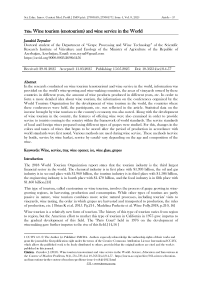Wine tourism (enotourism) and wine service in the World
Автор: Zeynalov J.
Журнал: Science, Education and Innovations in the Context of Modern Problems @imcra
Статья в выпуске: 4 vol.8, 2025 года.
Бесплатный доступ
In the research conducted on wine tourism (enotourism) and wine service in the world, information was provided on the world's wine-growing and wine-making countries, the areas of vineyards owned by these countries in different years, the amount of wine products produced in different years, etc. In order to form a more detailed idea about wine tourism, the information on the conferences organized by the World Tourism Organization for the development of wine tourism in the world, the countries where these conferences were held, the participants, etc. was reflected in the article. Statistical data on the income brought by wine tourism to the country's economy was also noted. Along with the development of wine tourism in the country, the features of offering wine were also examined in order to provide service to tourists coming to the country within the framework of world standards. The service standards of local and foreign wines prepared using different types of grapes were studied. For this, changes in the colors and tastes of wines that began to be stored after the period of production in accordance with world standards were first noted. Various methods are used during wine service. These methods (service by bottle, service by wine basket, service by carafe) vary depending on the age and composition of the wine.
Wine, service, tray, wine opener, ice, wine glass, grapes
Короткий адрес: https://sciup.org/16010618
IDR: 16010618 | DOI: 10.56334/sei/8.4.57
Текст научной статьи Wine tourism (enotourism) and wine service in the World
Doctoral student of the Department of “Grape Processing and Wine Technology” of the Scientific Research Institute of Viticulture and Enology of the Ministry of Agriculture of the Republic of Azerbaijan, Azerbaijan, Email:
The 2018 World Tourism Organization report states that the tourism industry is the third largest financial sector in the world. The chemical industry is in first place with $1.993 billion, the oil and gas industry is in second place with $1.960 billion, the tourism industry is in third place with $1.586 billion, the engineering industry is in fourth place with $1.470 billion, and the food industry is in fifth place with $1.460 billion.[13]
This type of tourism, called enotourism or wine tourism, involves the process of grape growing in winegrowing regions, its harvesting, production and consumption. While other types of tourism are partly passive in nature, wine tourism combines more active natural processes, including tourists' visits to vineyards, wine tasting, the order in which grapes are harvested and transported to production, the rules of production, etc. [ Brian K et al. 2015. Pg.214 , Madelina Puckette et al. Wine Folly.2018, p.210, 16]
Wine tourism is a relatively new form of tourism. The history of this type of tourism varies from region to region, but the American effort to market this type of tourism in California in 1975 gave impetus to the gradual development of this field. The "Paris Court" held in 1976 on the development of winemaking gave further impetus to the rise of this field.[ 14,16 ]
Among other regions, the Spanish region of Catalonia began implementing a marketing policy in this area in 2000.[15]
A 2004 film about Wine Tourism in the Santa Barbara region of Southern California sparked renewed interest in the field.[13]
The development of the wine tourism industry began to accelerate in the first decade of the 21st century. In 2017, 17% of tourists traveling to the United States chose wine and food tourism as their main destination. In Italy, this figure was estimated at 5 million tourists, and this type of tourism brought the country $2.5 billion in revenue. [13]
"Wine Tourism Day" is held on the second Sunday of November in Germany, Austria, Slovenia, Spain, France, Greece, Hungary, Italy and Portugal to promote wine tourism. Wine tourism in North America began on May 11, 2013.[13, 14]
In the South American country of Chile, wine tourism has also been developing at a rapid pace in recent years. Several wine routes have been developed in the country to develop this sector. These routes include visits to wine regions as well as basic services such as overnight stays, etc. [13, 14]
The development of wine tourism mainly begins with tourists traveling to wine-producing regions. They travel to vineyards, wineries, production areas, and cellars to gain detailed information about the industry and get to know the processes closely. According to estimates, 33% of wine sales worldwide are purchased by people interested in wine tourism from the place where the wine is produced.[15]
The growing wine tourism industry is also providing electric bicycle ("burricleta") services to allow people to travel more comfortably through vineyards due to the increasing interest in this field. [15]
The World Tourism Organization has been organizing a global conference since 2016 with the aim of developing wine tourism in the world. Issues such as the importance of this sector for the development of tourism in countries, ensuring the flow of tourists to the country, the recognition of the country in the international arena, the positive impact of this sector on the country's economy, etc. have been put on the agenda of the World Tourism Organization's Global Wine Tourism Conference. The sequence of the conferences organized is as follows:
-
1. September 7-9, 2016 Georgia (Kakheti region)
-
2. September 29-30, 2017 Argentina (Mendoza)
-
3. September 6-7, 2018 Moldova (Chisinau)
-
4. December 4-6, 2019 Chile (Colcagua)
The 2017 conference, held in Argentina, brought together over 640 participants from 23 countries, including Ministries of Tourism, Tourism Designated Management Organizations (TDOs), international and intergovernmental organizations, as well as tour operators, travel agencies, wine experts, and media representatives. [13]
Wine-producing countries are divided into two groups in the international arena: new and old countries.
-
• New wine-growing countries: USA, China, South Africa, New Zealand, Australia
-
• Ancient wine-making countries: France, Italy, Spain, Portugal and Germany
Wine festivals were held in many regions of the world in 2018.[13,14,16]
-
• Bordeaux (France) Wine Festival; July 14-16
-
• Fiesta del Albarino (Spain) Wine festival; August 1-5
-
• Edinburgh (Scotland) Food Festival; August 3-5
-
• Mainz (Germany) Wine Festival; August 23-26
-
• Hamburg (Germany) Wine Festival; August 23-26
-
• Chianti Classico (Italy) Wine Festival; September 7-10
-
• Rioja (USA) Grape Harvest Festival; September 20-25
The role of the tourism industry in the international arena can be clearly seen from the financial turnover of this sector ($1.586 billion in 2018). [13] For this reason, all countries around the world are trying to effectively use all the material and cultural resources available in the country in order to receive more tourists. Wine tourism is one of the important tourism areas for attracting tourists to the country, recognizing the country on a global scale, re-forming ancient and modern winemaking traditions, and ensuring economic development. As a result of the research conducted, it has been found that tourists traveling under the name of wine tourism are people who are looking for higher and better quality services and have a high financial category. Wine production around the world continues to increase at an increasing pace almost every year. The amount of wine production around the world, prepared by the International Organization of Oenology (OIV) and covering the years 2000-2019, is graphically depicted in Figure 1. [15]
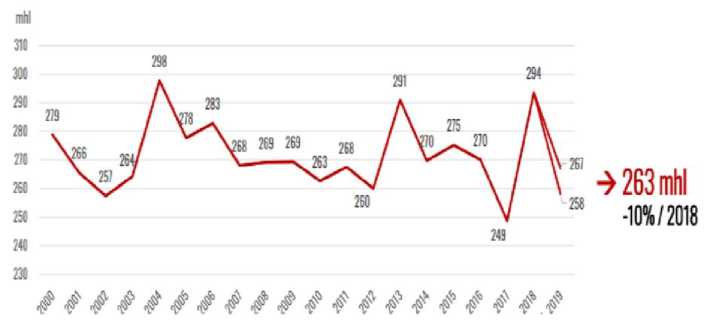
Figure 1. Global wine production volume 2000-2019
(OIV-International Organization of Vine and Wine -2019 report)
Methodology
The research work was carried out at the Scientific Research Institute of Viticulture and Enology of the Ministry of Agriculture and Rural Development and several hotel chains (Qafqaz Baku City Hotel, Midtown Hotel Baku, Midway Hotel Baku). In order to develop wine tourism in our country, taking into account the more efficient nature of the research, the wine tasting process was carried out by serving wine to citizens of different countries. The research was mainly conducted with local wines produced using introduced foreign grape varieties and local grapes. In order to more clearly examine the differences, foreign wines were also used during the service. Also, in order to implement world standards, the necessary equipment was applied for the perfection of wine service. (Figure 1) [ Brian K et al. 2015. P.255 , Madelina Puckette et al. Wine Folly.2018, p.198 ]
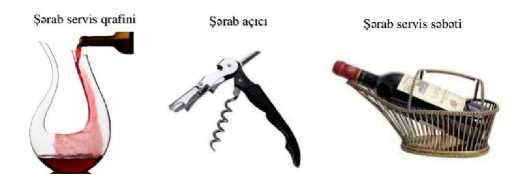
Figure 1. Equipment used during wine service
(Brian K et al. 2015. Pg.245)
The presentation of all types of wines produced around the world to guests is as important and significant as the process of their production. Over the years, wine service features have developed and formed taking into account the wishes and desires of guests, their comfort, and their enjoyment of wine, etc. The reason why wines are so special has led to the creation of the sommelier service in restaurants. The methods of offering different types of wines are as follows. [Brian K et al. 2015. Pg.288, Madelina Puckette et al. Wine Folly.2018, p.248 ]
White and Rose Wine Service
-
• After checking the cleanliness of the wine cooler, a quantity of ice and a little water are added to the container (if you want to quickly cool any wine, add salt to the added ice and stir it slightly. The salt will melt the ice and turn it into liquid, helping to cool the bottle quickly) [Madelina Puckette et al. Wine Folly.2018, p.240].
-
• The ordered wine is placed in a serving dish.
-
• The top of the wine serving bowl is neatly covered with a cloth napkin.
-
• The person who will serve the wine is checked for essential supplies (wine opener, matches, notepad, etc.).
-
• A small flat plate and an additional number of wine glasses are prepared for the cork inserted into the mouth of the wine bottle.
-
• A pre-selected wine is brought and served to the guest.
-
• The cloth napkin on the wine service cup is taken and placed on the left arm.
-
• The bottle is removed from the wine serving dish by holding it at the top and the water in the bottle
is drained.
•The bottle is placed on a cloth napkin, with the label on the bottle facing up, in a way that the guest will see it.
-
• Wine is served to the guest from the right side (the bottle is held by the lower part with the left hand on one side and the upper part with the right hand on the other side to ensure that it does not spill).
During service
-
• The wine bottle is placed on a serving cart or wine serving tray at the edge of the table with the label facing the guest.
-
• The protective part at the mouth of the bottle is cut with the special cutting part of the wine opener (Figure 1).
-
• The tip of the wine opener should be inserted into the cork at the neck of the bottle in the correct order, and special care should be taken to ensure that it is not pierced all the way through (if it is pierced all the way through, the cork fragments will fall into the bottle).
-
• After holding the neck of the bottle with your left hand, slowly lift the handle of the wine opener in your right hand up (At this time, you need to hold the wine opener firmly with your fingers to prevent it from slipping).
-
• The cork should not be completely removed from the neck of the bottle with a wine opener. Just before the cork is about to come out, the wine opener should be moved back and forth with the right hand along with the cork. When the cork is removed, there should be no sound from the mouth of the bottle that is typical of sparkling wines.
-
• After the cork is removed from the bottle, it is sniffed and removed from the wine opener.
-
• The removed cork is placed on the guest's table on a small plate (This process is most appropriate
for expensive and high-quality, as well as aged wines).
-
• After removing the stopper, the mouth of the bottle should be wiped with a tissue.
-
• The service should then continue within the standards.
-
• The label part of the opened bottle is kept exposed, while the other parts of the bottle are wrapped in a cloth napkin.
-
• A little wine is poured into an additional glass to remove any crumbs from the mouth of the bottle.
-
• Hold the bottle straight in the middle with your right hand (the index finger should be facing the mouth of the bottle and the bottle label should be between the thumb and index finger).
-
• The guest approaches the table from the right side, taking a half-step forward with the right foot .
-
• The wine is poured into the glass by leaning slightly downwards. The left hand should be kept behind.
-
• A small amount of wine should be strained, keeping the mouth of the bottle 1-2 cm above the glass (you should follow the procedure we mentioned to taste the wine).
-
• After the filtering process is complete, the bottle mouth should be turned to the right and pulled back. This will prevent any wine drops remaining in the mouth of the bottle from falling to the ground.
-
• After tasting the wine for the person who ordered it, you should wait for their approval.
-
• After receiving consent, the wine should be poured into the glasses of those seated at the table in the correct order and finally added to the glass of the person who ordered the wine. Note: This process should be carried out very carefully and in accordance with standards.
-
• After the first service, if the wine is drained for guests who have finished their wine, and if the wine has not changed, the first glass used should be used. If the wine has changed, the glasses should be replaced with new ones (White and rosé wines should not be topped up if they are not completely finished in the glass. Because these types of wines are drunk cold and the wine remaining in the glass warms up, it will lose its properties when topped up with wine) . [Brian K et al. 2015. Pg.294, Madelina Puckette et al. Wine Folly.2018, p.256 ]
Red wine service
Red wines should be served at a temperature of 12-20 º C, depending on the grape variety, age of the wine, and composition (Table 1).
Red wines are served in three ways.
-
• With a bottle
-
• In the basket (Figure 1)
-
• Decanter service (wine carafe) (Figure 1)
During the service of young red wine The bottle is brought to the table on a tray with a napkin and another plate next to it and placed on a serving cart. The bottle is held with the right hand and placed on top of the left hand. The bottle's label must be shown to the guest.
-
• After the wine bottle is brought to the table, the bottle should be presented to the guest again to verify the correctness of the guest's choice. At this time, the label of the wine must be kept facing the guest.
-
• Young red wine is served in the same way as white and rosé wines. The difference is that this wine is not cooled for a long time, as is the case with white and rosé wines. Since these types of wines are served colder than aged red wines, in some cases they need to be cooled. Depending on taste, these types of wines can also be served at normal temperature.
-
• Red wine is filtered to about 3/4 of the glass . [ Brian K et al. 2015. Pg.298, Madelina Puckette et al. Wine Folly.2018, p.263 ]
-
• It is generally appropriate to present aged wines to the guest in a basket (Figure 1). The wine intended for service is brought to the table inside the basket.
-
• The wine basket is placed on the serving cart with the bottle mouth on the right. The wine is then served in the same order as for white and rosé wines.
-
• After opening the mouth of branded or aged wines, the cork is removed from the wine opener and smelled.
-
• It is also possible to know the quality of the wine from the smell of the cork (Almost all branded wines use corks made from mushrooms grown mainly in Portugal. Since these corks are made from natural mushrooms, they absorb the odors in the wine, depending on the composition of the wine, and have a very beautiful, aromatic smell).
-
• The removed cork is separated from the wine opener and placed on the table in a small plate. Guests also take this cork and smell it.
Serving aged wines in a basket can be done in two ways.
-
• The wine basket is held with the right hand. It is served from the guest's right.
-
• The wine basket is held in the left hand. After the guest approaches from the right, the glass is picked up from the table with the right hand, pulled back slightly, and then filled with wine. The glass is replaced with the right hand. [Brian K et al. 2015. Pg.304, Madelina Puckette et al. Wine Folly.2018, p.271]
Wines that are served decanted are generally of higher quality and more mature wines. Because wines that have been stored in barrels and bottles for a long time slowly begin to release their aromas after being decanted. Some wines even taste better when opened two hours before serving. [ Brian K et al. 2015. Pg.306 , Madelina Puckette et al. Wine Folly.2018, p.274]
Conclusion and discussion:
Studies have shown that aging wines according to standards has a positive effect on their taste and color change. This makes the wine more popular. As wines age, their color change manifests itself in organoleptic and physicochemical forms. (Figure 2, Figure 3)
As red wines age, their color changes from ruby red to terracotta red. This process is illustrated in the image below (Figure 2).
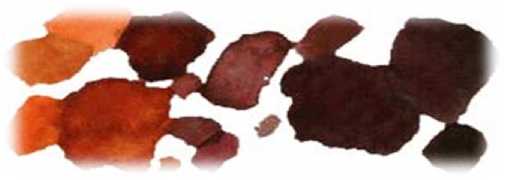
Figure 2. Color changes in red wines during storage / (Madelina Puckette et al. Wine Folly. 2018, p. 43.)
As white wine ages, its color changes from light yellow to honey or golden yellow. This process is illustrated below (Figure 3).
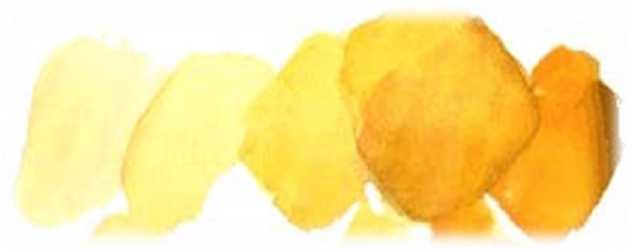
Figure 3. Color changes in white wines during storage /
(Madelina Puckette et al. Wine Folly. 2018, p. 43.)
During the conducted research, a table of the most suitable temperatures for wine products was prepared depending on the storage period of wines, their compositional properties, etc. differences. It was found that young wines that have been stored for less time have a positive effect when drunk cold, bringing out their compositional and taste characteristics more to the fore than wines that have been stored for a long time (Table 1). There are also differences in the rules for offering wines prepared depending on the type of grape from which they are produced.
Table 1. The most appropriate serving temperatures for different characteristics of wine products.
|
Champagne and sparkling wines |
4-6° |
|
Sweet and semi-sweet white wines |
6-8° |
|
Dry young white and rosé wines |
8-10° |
|
Aged white wines |
10-12° |
|
Young red wines |
12-14° |
|
Lightly aged red wines |
14-18° |
|
Aged red wines |
18-20° |
Research has shown that wines made from different grape varieties grown in different countries express their compositional characteristics more clearly when served in glasses marked with their names. This helps to highlight their taste and aroma factors more perfectly. Some examples of these types of wine are as follows. (Figure 4)
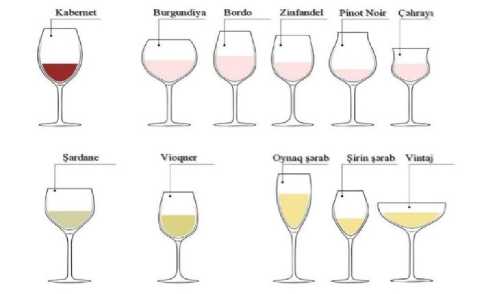
Figure 4. Types of glasses in which wines are served, depending on the type/
(Madelina Puckette et al. Wine Folly.2018, p.123.)
During the research, it was also found that serving wines within the standards does not depend only on their temperature or glass. If wines are not compatible with the food components selected based on their specific characteristics, they will have an unpleasant taste in the mouth and lose their quality. For this reason, their proper serving and with appropriate dishes have been studied and studied.
If wine and food complement each other, that is, if the ingredients and preparation method of the food form a unity with the composition, aroma, taste and other characteristics of the wine, the desired harmony will be created. As a result of research, three main factors have emerged from these considerations.
-
1. The compositional characteristics of wine must be properly assessed
-
2. The serving order, aromas, tastes, characteristics, and textures of wine and food should be parallel to each other.
-
3. Wine has three main enemies at the dinner table.
-
• Salad with vinegar or a lot of vinegar added.
-
• Very sour food or drink (lemon or lime)
-
• Fatty foods (very fatty fish, especially red wine, have a very bad effect).
-
• Salt enhances the perception of the odor and bitterness of substances in wine and food in the mouth.
Another important point is that during wine service, there is a different service depending on the status of the guests sitting at the table. This point is also considered a very important factor within the framework of international standards.
If the guests at the table are all men of the same age, service should be done clockwise, with the wine poured from the last to the first guest. This should be done in the same manner for female guests.
If the guests at the table are women and men of different ages, the wine pouring process should be carried out clockwise, starting with the older woman, then the younger woman, then the older man, and then the younger man.
If those sitting at the table are officers with military ranks, service should be carried out from the highest to the lowest rank according to rank (this process should be carried out if they are in military uniform).

